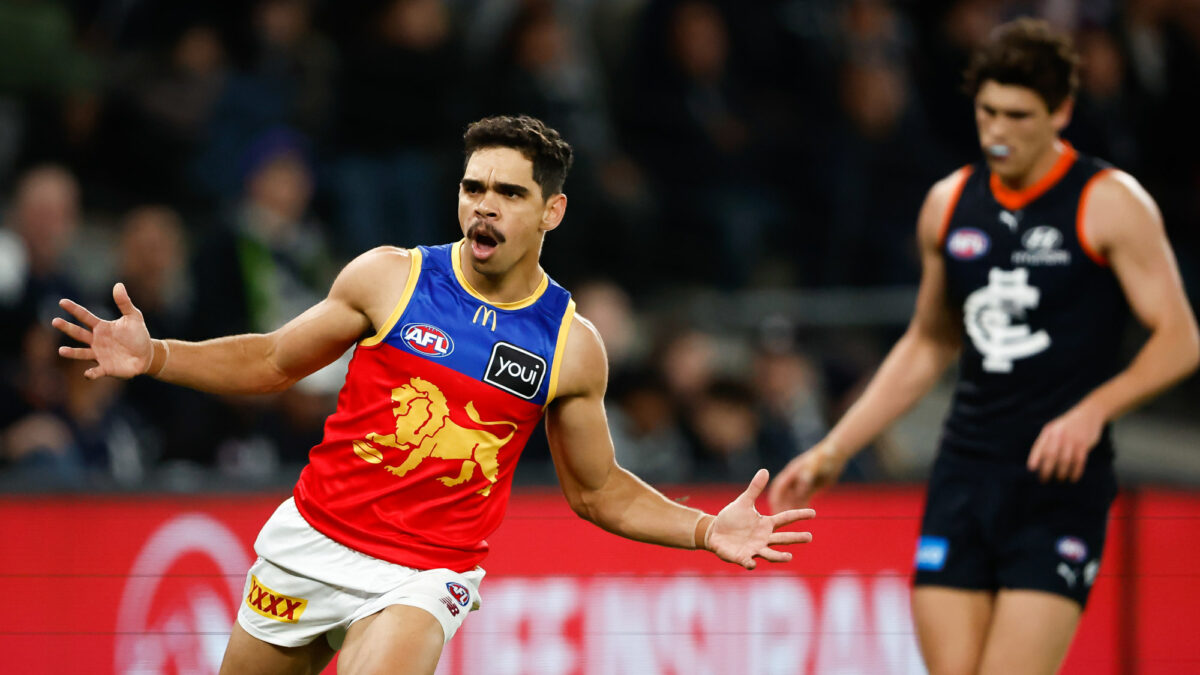Whether it’s something to rev up a team ahead of a crunch match, or soothing sounds to wind down during recovery, music’s role in boosting sports performance – mental and physical – sometimes goes unheralded.
Like preferences for certain colors, flavors and even partner selection, music taste is always going to split a room. But thankfully we have scientists – and solid argumentation – to help resolve seemingly intractable questions like why people love rap, hate reggae, or whatever. And for sport, there is a firm body of evidence growing on the impact of certain genres on motivation and performance levels.
There’s a reason boxers have a signature tune as they enter the ring, and why soccer clubs blast out beats to energize players and the crowd. AFL clubs and stadiums are also using soundtracks for entertainment and increasingly as in-game interludes and personalized playlists.
Brisbane has locked onto this idea with goal celebration songs like Charlie Cameron’s Country Roads theme and Cam Rayner’s Sweet Caroline seemingly on repeat.
Researchers tell us that music primes the brain and body for optimal performance, making it a powerful tool in competitive sport environments.
A pioneering study from Lucaccini & Kreit in 1972 found that a staggering 93% of elite athletes use music before competition.
More recent research in the Asian Journal of Sports Medicine in 2012 noted higher peak and mean power outputs in well-trained athletes listening to high-tempo music during warm-ups.
Similar gains in athletic endurance have also been observed. Psychologists at Brunel University London and University of Southern Queensland found that synchronous music – when an athlete’s stride is matched to the music’s tempo – has a “metronomic effect” on the body. The music improved energy efficiency by 1-3%, enabling triathletes to cover greater distances using the same amount of oxygen.
The study also highlighted music’s psychological impact by reducing the athletes’ “perceived effort”, helping them push through fatigue. Previous studies have shown that recreational exercisers also experience performance and motivation gains when training with synchronous music.
Another scientific paper (Nature Neuroscience) reported that athletes using motivational music show significantly higher dopamine activity, influencing emotional pleasure and drive. The music induced the release of natural chemicals in the brain’s reward center that help control pleasure, motivation, and movement.
Music has been proven to boost elite (and recreational) athletic performance, but can it be tweaked or tuned for maximum benefit in the AFL context?
Performance coaches across the league no doubt have their own take on this, and much may depend on individual players (age, taste etc.), dynamics within the team, and specific seasonal or in-game circumstances.
But for the sake of argument, music genres combining a mix of high energy and strong rhythms for individual rev-ups, or tailored use of emotional/recognizable melodies for group unity, are popular in professional sports settings.
While preferences vary by sport and culture, some of the more effective styles used across different codes include: hip-hop/rap (powerful beats, lyrical confidence invokes swagger, self-belief, mental toughness); electronic dance music (beat build-ups and drops energize players); hard rock (guitar riffs, rebellious energy, create battle-ready mindset), trap/drill (bass-heavy, aggressive delivery, fearless/job-done attitude), reggae/Latino (gentler family/team unity vibes, calmness, recovery).
Through different means and mechanisms, both physical and psychological, music plays an increasingly important role in team-readiness. It can help focus minds, channel energy, and shut out distractions. It works on the brain’s reward center, arousing and stimulating adrenaline and alertness.
Depending on individual taste but also match themes, it can instill confidence through lyrical references and rhythms that reinforce self-belief. At a group level it can help with cohesion, using shared anthems and tracks to build team spirit. It also has proven physical benefits, boosting peak output and endurance.
If they haven’t already, perhaps it’s time clubs started tuning in and turning up the music for better mental and physical outcomes.







